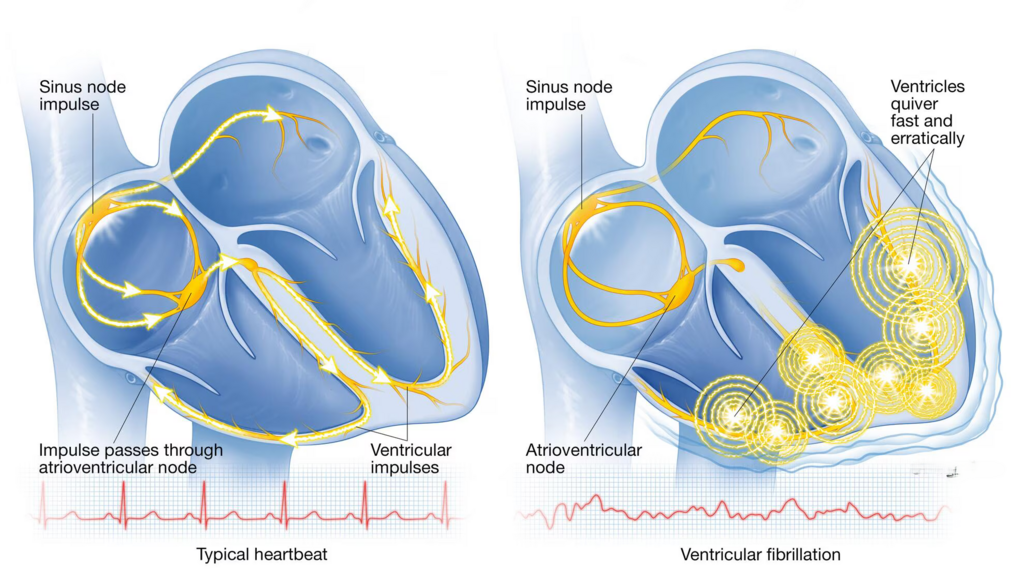What’s happening inside the heart
- Normal heartbeat: electrical signals spread smoothly, causing the heart to pump blood.
- In VF: many abnormal impulses fire randomly, producing a very fast, irregular rhythm (>300/min).
- On a monitor/ECG: VF looks like a wavy, irregular line with no recognisable QRS complexes.
- It often starts as ventricular tachycardia (VT), and is a very rapid ventricular rhythm that often leads to inadequate perfusion and commonly degenerates into VF if untreated.
